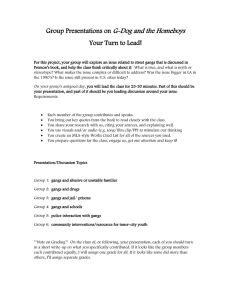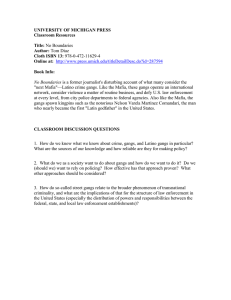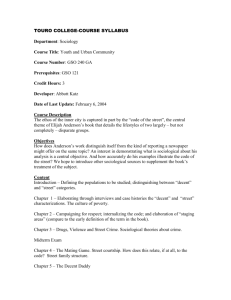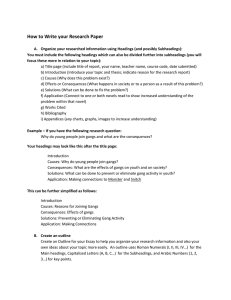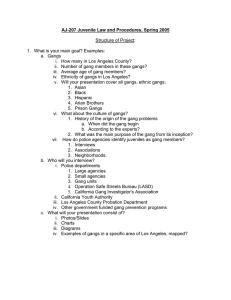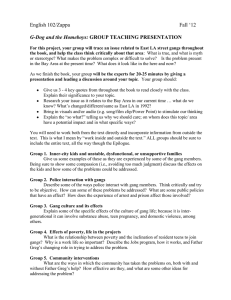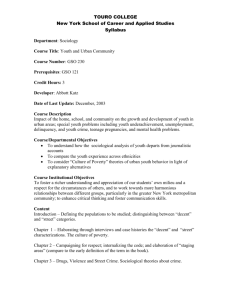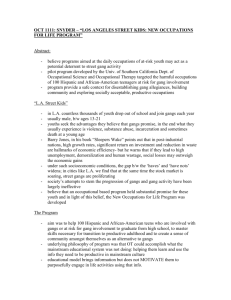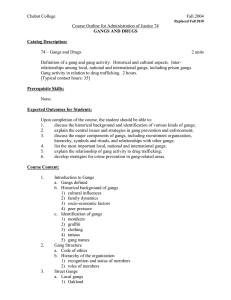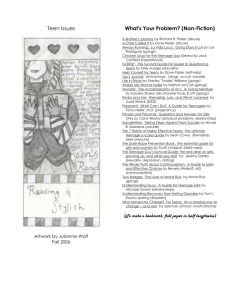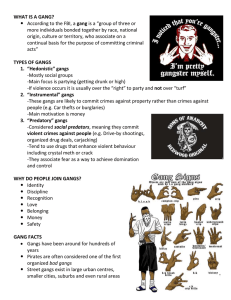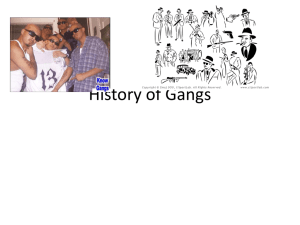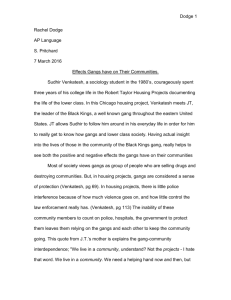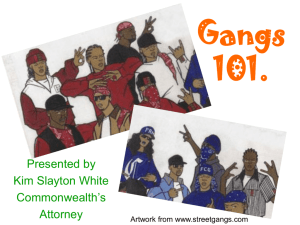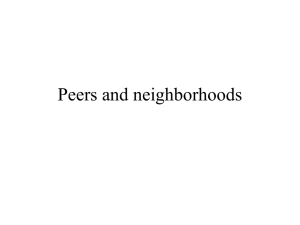Centralization of Gang Structure
advertisement
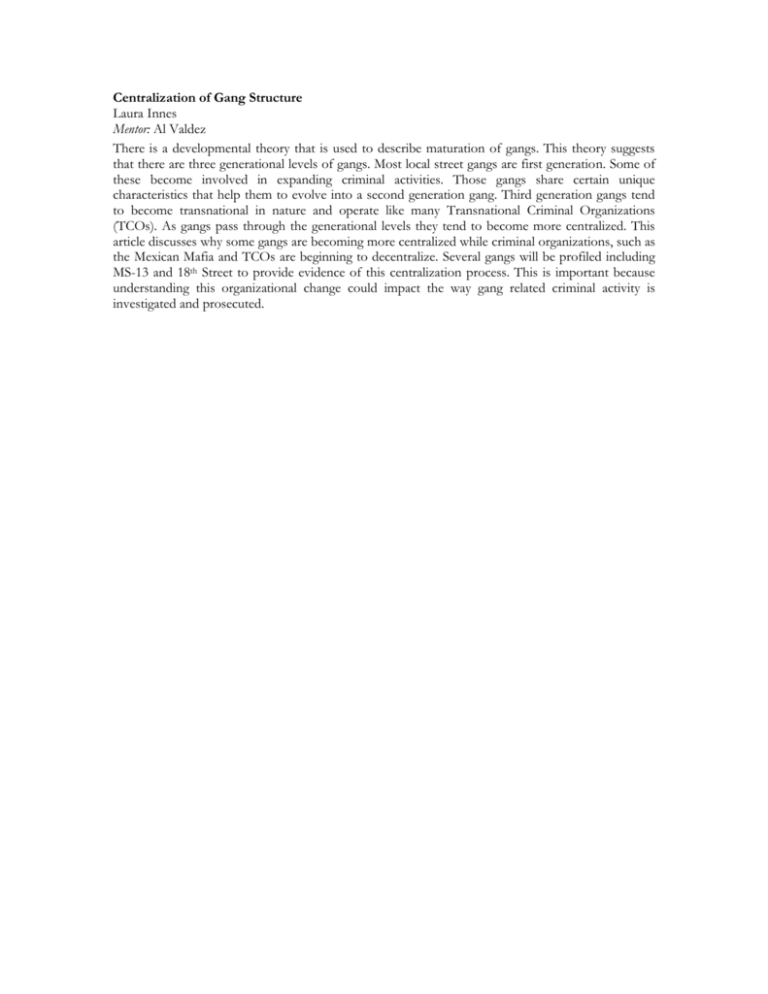
Centralization of Gang Structure Laura Innes Mentor: Al Valdez There is a developmental theory that is used to describe maturation of gangs. This theory suggests that there are three generational levels of gangs. Most local street gangs are first generation. Some of these become involved in expanding criminal activities. Those gangs share certain unique characteristics that help them to evolve into a second generation gang. Third generation gangs tend to become transnational in nature and operate like many Transnational Criminal Organizations (TCOs). As gangs pass through the generational levels they tend to become more centralized. This article discusses why some gangs are becoming more centralized while criminal organizations, such as the Mexican Mafia and TCOs are beginning to decentralize. Several gangs will be profiled including MS-13 and 18th Street to provide evidence of this centralization process. This is important because understanding this organizational change could impact the way gang related criminal activity is investigated and prosecuted.



